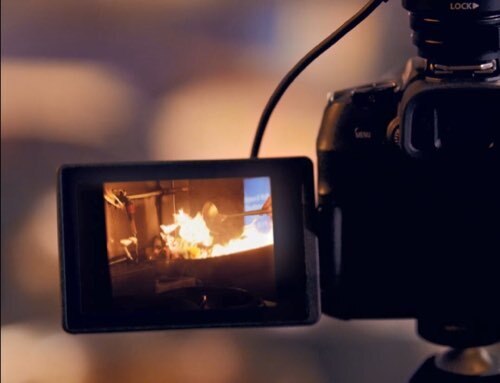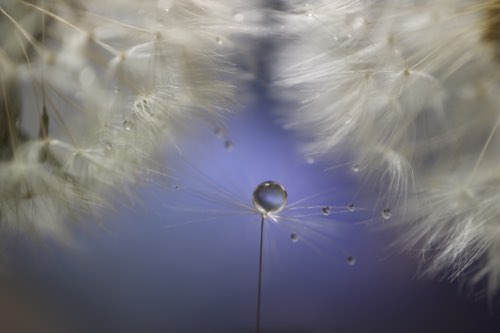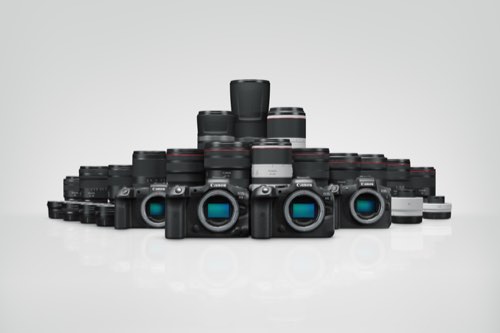Slow and steady is how plants run their race. To catch a detailed glimpse of your plant babies flourishing, you’ll need to make use of the time-lapse function in your camera to capture their minute growth within a time period. In this article, we will be sharing some useful tips to make the process easier for you. Oh, and if you need a recap on setting up your Canon camera’s time-lapse function and essential gear, read here!
Blue Morning Glory by @flower_kazuko
Interval: 2s, Number of frames: 3600, Shooting time: Approx. 2 hours
Time-lapse captured after dawn for showcasing the flower blooming in the morning.
EOS 6D Mark II, EF 28-135mm f/3.5-5.6 IS USM
Identify your plant
To know their behaviour is to do your research. Some plants, like the wood sorrels family, are highly “photophilic”. This means that they open and close their blooms and leaves in response to light. This allows you to set your time-lapse during sunrise or sunset to capture the biggest change in your plants. For the above example, the time-lapse was taken just after dawn due to Morning Glory’s behaviour of blooming in the morning. You can also find typical behaviours of your plant (flowering season, germination period and more) by looking them up online before realising your first concept.
Knowing your plant’s behaviour can help you gauge how big or fast the movements will be. This allows you to plan for the best interval timing for achieving a smooth video output, while ensuring that your subject stays within the frame. It also allows you to pick out the angle that best features your subject.
Asiatic Dayflower by @flower_kazuko
Interval: 2s, Number of frames: 1920, Shooting time: Approx. 1 hour
A time-lapse of a caterpillar munching on the Asiatic Dayflower’s leaves.
EOS 6D Mark II, EF 28-135mm f/3.5-5.6 IS USM
Time Taken
The total time taken is also crucial to know when planning the time-lapse. Some time-lapse ideas, such as the revival of dehydrated plants, can take no more than 12 hours, while visibly obvious concepts like a caterpillar munching on leaves can be taken in an even shorter time frame of one to two hours. This information allows for planning ahead to adjust your camera settings, prepare essential equipment, and ensure sufficient memory capacity in your SD card.
If the time-lapse concept requires a few days, there are three ways you can overcome the battery challenge:
- Prepare an extra, fully charged battery to switch out whenever the battery in your camera is low. Do note that this will stop the time-lapse in progress, so you’ll need to restart your camera settings again. You’ll also need to stitch the loose videos together to make one complete version.
- If the total time-lapse duration is within the lifespan of two batteries and you do not want to utilise the first suggestion, you can always purchase a battery grip that takes two batteries.
- You can use an AC adapter that is plugged into the camera. This method powers the camera using household power (electricity from a wall socket), so it can span over a few days, eliminating the need for battery swaps.
Other tips when shooting time-lapse videos are to:
Cactus Flower Blooming by @barquerojimmy
Interval: 35s, Number of frames: 350, Shooting time: Approx. 3.5 hours
A time-lapse of Cactus Echinopsis flowering in a room setting with natural light.
EOS 90D, EF-S 35mm f/2.8 Macro IS STM
Environment
Here are some considerations on how the environment will affect time-lapse photography for plants:
- Outdoors or Indoors
When shooting outdoors with natural sunlight, you will be exposed to uncertainties such as weather changes and strong wind (some frames may look ‘choppy’ due to sudden big movements from your plants). Reduce potential obstacles by switching to a sheltered area like your room but keeping the plant by the window to retain the natural sunlight outdoorsy aesthetics. You should also check the weather forecast to reduce the chance of sudden weather changes.
For indoors, you can opt for a fully controlled environment by setting up a constant, artificial light in a room that has no interference from other light sources. You can also keep it clean with a white or black background. This can make your subject even more appealing - think black or white background against a pop of colour (your subject). Another benefit of this method is that it eliminates the need for exposure check-ins.
- Determining a suitable camera setting
Av mode (Aperture Priority): This mode works best when you are shooting in an area where your subject is kept pretty still (no sudden movements from strong winds) and that you’re not concerned with elements of motion blur being captured outside of the focal point (moving cars in your background etc).
Tv mode (Shutter Priority): This mode works best when you’re shooting your subject from a distance. The focus will be kept on your subject regardless of the depth of field (larger aperture = your subject will be focused but the environment around it won’t be, small aperture = your subject and its environment will be focused).
Auto ISO: Our most recommended setting for a consistent time-lapse output - you can achieve the correct exposure without shifting the aperture value (retaining the same depth of field) or using too slow of a shutter speed. You can set the minimum shutter speed value that will achieve a clean shot without any motion blur, and the camera will not utilise anything slower than the capped value (dependent on your camera’s capabilities).
- Double-checking the exposure
You can use the Canon Camera Connect App (if you’re opting for wireless) or utilise the tethering method via EOS Utility. This allows you to check the exposure without touching your camera, eliminating any camera shake issues to your final output. You should also check the exposure every few hours to ensure that your subject is still well-lit and visible.
Other ideas you can consider for your plant time-lapse ideas include the inhabitants in your garden or the ripening of fruits and seed germination. Read more on other interesting ways to capture videos here!
For similar articles:
4 Ways to Photograph Your Plants Like A Pro
Telephoto Macro Technique: An Ordinary Leaf Gets the Limelight
Beginner’s Introduction to Gardening Photography

































